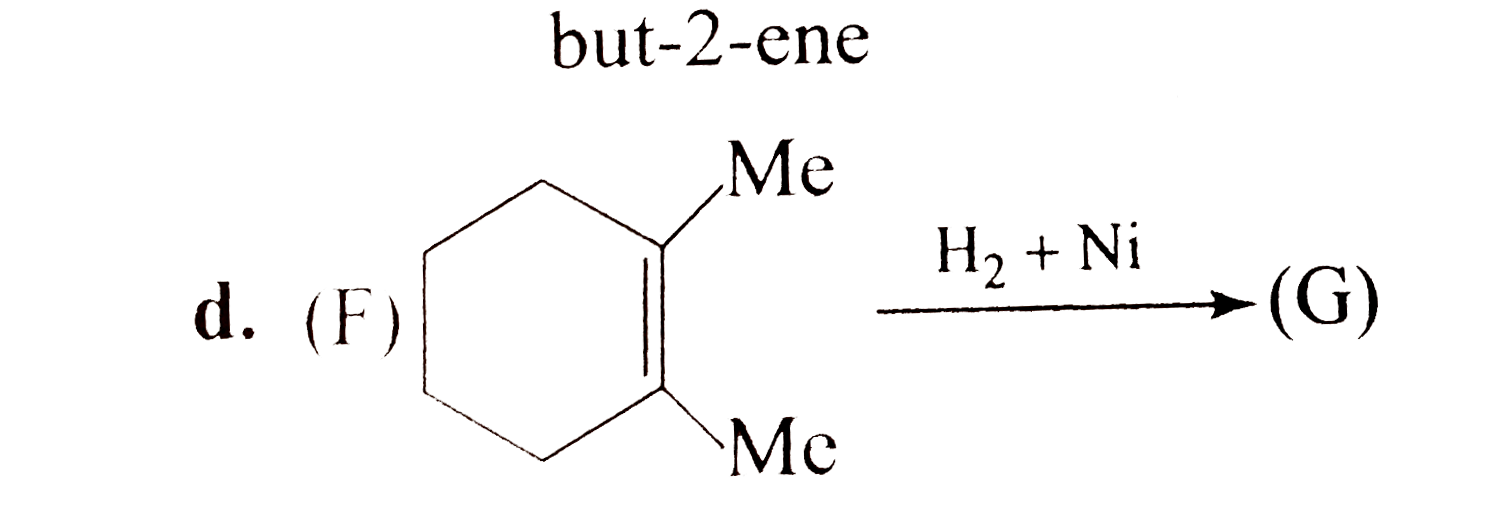How will you prepare (i) cis-pent-2-ene and trans-pent-2-ene by starting with ethyne ?
To prepare cis-pent-2-ene and trans-pent-2-ene starting from ethyne, we can follow these steps:
Step 1: Formation of Ethyne
Start with ethyne (C2H2), which is represented as H-C≡C-H.
Step 2: Deprotonation to Form Dianion
React ethyne with sodium amide (NaNH2). The sodium amide acts as a strong base and removes two protons (H+) from ethyne, resulting in the formation of the ethyne dianion (C2H2^2-).
Hint: Use a strong base to remove protons from ethyne.
Step 3: Alkylation to Extend Carbon Chain
Next, perform an alkylation reaction. React the ethyne dianion with a methyl halide (e.g., CH3Br). This will add a methyl group to the carbon chain, resulting in 1-butyne (C4H6).
Hint: Alkylation involves adding a carbon chain using a halide.
Step 4: Further Alkylation
Repeat the alkylation process. React 1-butyne with sodium amide again and then with another methyl halide (CH3Br). This will yield 2-pentyne (C5H8).
Hint: You can extend the carbon chain by repeating the alkylation.
Step 5: Hydrogenation to Form Cis and Trans Isomers
Now, to obtain cis-pent-2-ene, perform a syn-hydrogenation of 2-pentyne using hydrogen gas (H2) in the presence of a catalyst such as palladium (Pd) supported on barium sulfate (BaSO4). This reaction will yield cis-pent-2-ene.
Hint: Syn-hydrogenation leads to the cis isomer.
Step 6: Formation of Trans Isomer
To obtain trans-pent-2-ene, perform a reduction of 2-pentyne using sodium in liquid ammonia (Na/NH3). This method will yield the trans isomer.
Hint: Use sodium in ammonia for the trans isomer.
Summary of Products
- Cis-pent-2-ene is formed through syn-hydrogenation.
- Trans-pent-2-ene is formed through reduction with sodium in ammonia.
Final Note
This method effectively utilizes ethyne as a starting material to synthesize both isomers of pent-2-ene through a series of reactions involving deprotonation, alkylation, and selective hydrogenation.
---
Start with ethyne (C2H2), which is represented as H-C≡C-H.
React ethyne with sodium amide (NaNH2). The sodium amide acts as a strong base and removes two protons (H+) from ethyne, resulting in the formation of the ethyne dianion (C2H2^2-).
Next, perform an alkylation reaction. React the ethyne dianion with a methyl halide (e.g., CH3Br). This will add a methyl group to the carbon chain, resulting in 1-butyne (C4H6).
Repeat the alkylation process. React 1-butyne with sodium amide again and then with another methyl halide (CH3Br). This will yield 2-pentyne (C5H8).
Now, to obtain cis-pent-2-ene, perform a syn-hydrogenation of 2-pentyne using hydrogen gas (H2) in the presence of a catalyst such as palladium (Pd) supported on barium sulfate (BaSO4). This reaction will yield cis-pent-2-ene.
To obtain trans-pent-2-ene, perform a reduction of 2-pentyne using sodium in liquid ammonia (Na/NH3). This method will yield the trans isomer.
- Cis-pent-2-ene is formed through syn-hydrogenation.
- Trans-pent-2-ene is formed through reduction with sodium in ammonia.
This method effectively utilizes ethyne as a starting material to synthesize both isomers of pent-2-ene through a series of reactions involving deprotonation, alkylation, and selective hydrogenation.
Topper's Solved these Questions
- HYDROCARBONSBook:PRADEEPChapter:HYDROCARBONSExercise:NCERT QUESTION AND EXERCISES WITH ANSWERS
Explore 14 Videos
- HYDROCARBONSBook:PRADEEPChapter:HYDROCARBONSExercise:NCERT QUESTION AND EXERCISES WITH ANSWERS (NCERT EXCERCISES)
Explore 25 Videos
- HYDROCARBONSBook:PRADEEPChapter:HYDROCARBONSExercise:TEST YOUR GRIP (FILL IN THE BLANKS )
Explore 20 Videos
- EQUILIBRIUM IN PHYSICAL AND CHEMICAL PROCESSESBook:PRADEEPChapter:EQUILIBRIUM IN PHYSICAL AND CHEMICAL PROCESSESExercise:Competition Focus (Jee(Main and advanced)/Medical Entrance) VIII. ASSERTION - REASON TYPE QUESTIONS (TYPE - II)
Explore 10 Videos
- HYDROGEN Book:PRADEEPChapter:HYDROGEN Exercise:COMPETITION FOCUS (Assertion-Reason Type Questions) Type 2
Explore 15 Videos
Similar Questions
Knowledge Check
But-2-yne is reduced to trans-but-2-ene using
AZn in dil.HCIBH2,NiCH2∣Pd−BaSO4DNa in liq. NH3But-2-yne is reduced to trans-but-2-ene using
AH2/NiBNa in liq. NH3CH2/Pd−CDZn in dil. HCIArrange the following according to the increasing order of stability:
Propene(I), cis-but-2-ene (II), trans-but-2-ene (III), 1,3-dimethylbut-2-ene (IV), ethene (V)AV<IV<III<II<IBV<IV<III<I<IICV<I<II<III<IVDNone of these.
What alkyne would you start with and what reagents would you use to prepare:
(i) cis-but-2-ene (ii) trans-pent-2-ene
View SolutionWhich of the two trans-but-2-ene or trans-pent-2.ene is non polar?
View SolutionWhich of the two : trans-but-2-ene-or trans- pent-2- ene is non polar ?
View SolutionWhich of the two : trans-but-2-ene-or trans- pent-2- ene is non polar ?
View SolutionGive the products with their stereoisomers, if any.
a.
b. cis −2,− Dibromobut−2−ene
cis −2,− Dibromobut−2−ene
c. trans−2,3− Dibromobut−2−ene
trans−2,3− Dibromobut−2−ene
d.
e. (H)trans-2,3-Dibromo-pent-2-eneH2+PtO2−−−−−→(I)
f.(J)cis-2,3-Dibromo-pent-2-eneH2+Pt+C−−−−−−→(K)
g. cis - But -2-ene D2+Pt−−−−→
h. trans− But −2− ene D2+Pd−−−−→
i. Why is the stereochemical product same when cis − or tans − pent −2− ene is hydrogenated with D2, in the presence of platinum ?
j.Classify the two reactions :(i) hydrogenenation of alkene with transition metala (Pt or Pd or Ni) and (ii) hydrogenation with Wilkinson's catalyst in terms of catalyst used and their mechanism of hydrogenation with Wilkinson's catalyst.
View Solution